
Take Home Points
- For the most part these injuries happen in warm coastal areas
- Injuries tend to be from venomous pokey bits
- Treatment for these injuries involves wound care, antibiotics if indicated (covering for Vibrio, Aeromonas, and Mycobacterium marinum), and sometimes hot water immersion or acetic acid/vinegar
In-training exam time is coming up fast, do you know your marine animal tox questions? This a great board review article written by our own Jennifer Luk, we’ll underline the pearls (not intended) and she even put in a helpful table for you to keep everything organized. Onward and downward…
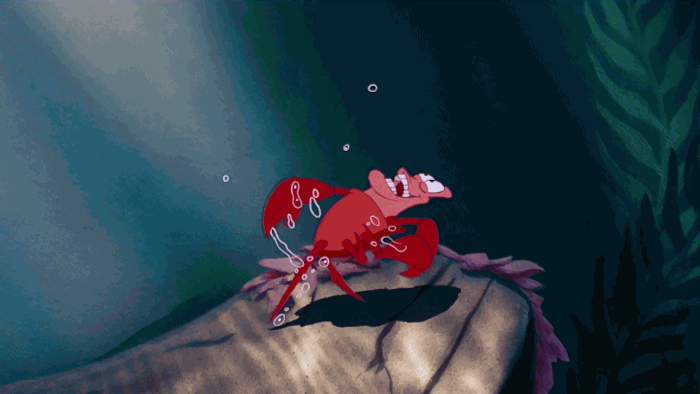
Stingrays
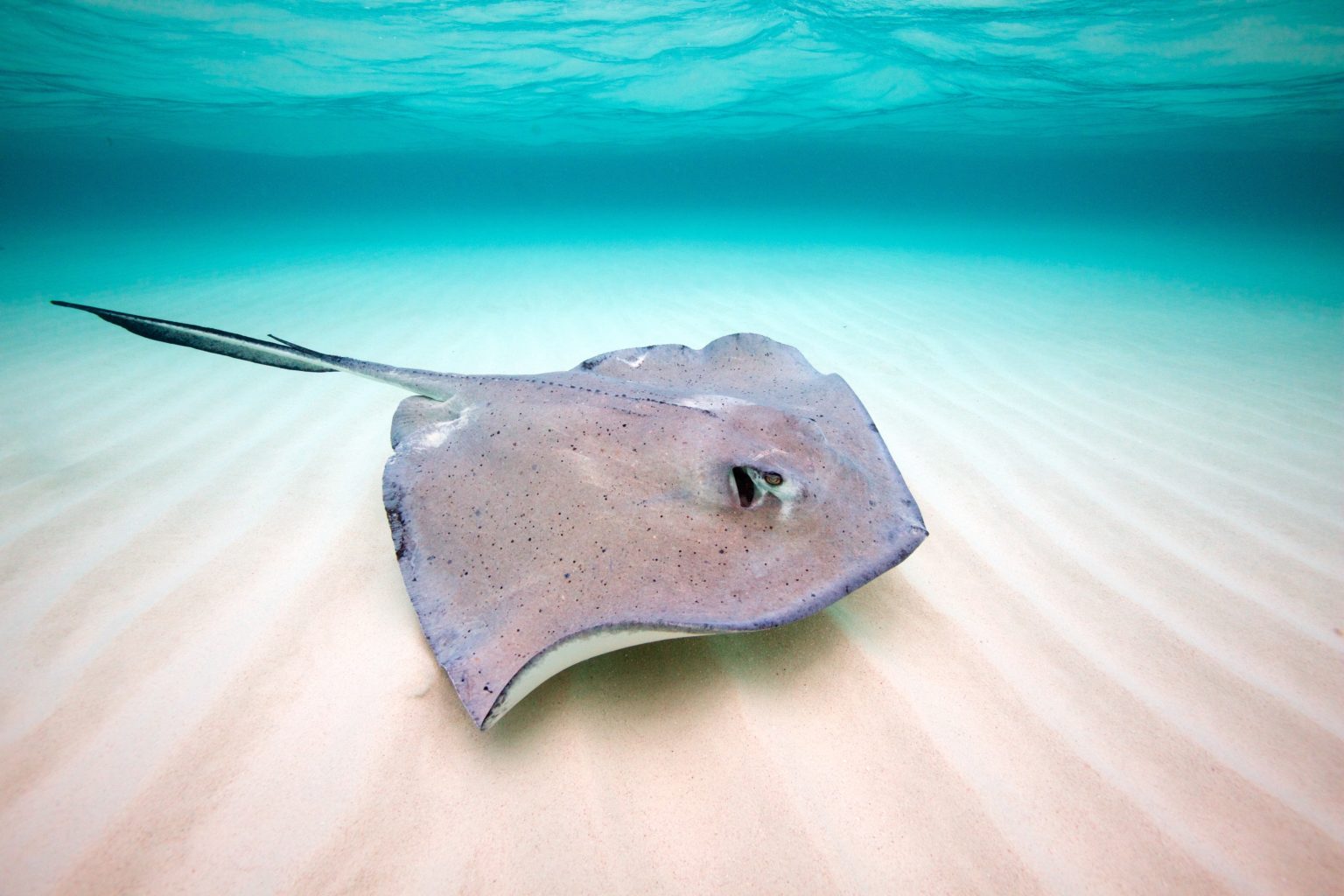
- Location: Found in shallow coastal waters, particularly in sandy or muddy bottoms in tropical and subtropical regions.
- Injury Mechanism: Venomous tail barbs that can cause lacerations and envenomation.
- Clinical Presentation: Severe pain, bleeding, puncture wounds, and potential systemic effects of peripheral vasodilation including commonly syncope, weakness, nausea, and anxiety.
- Treatment:
- Hot Water Immersion: Submerge the affected area in hot water (43-45°C) to denature the venom and alleviate pain.
- Wound Irrigation and Debridement
- Tetanus Prophylaxis and Antibiotics: Administer for open wounds to prevent Vibrio infections.
- Radiographs: Use to detect any retained foreign bodies, such as barb fragments.1
Bony Fish (e.g., Catfish, Scorpionfish, Lionfish)
- Location: Common in warm coastal waters and coral reefs; found in both shallow and deep waters.
- Injury Mechanism: Spines can inject venom or create puncture wounds.
- Clinical Presentation: Local pain, redness, and edema; systemic symptoms like weakness or hypotension may occur in severe cases.
- Treatment:
- Hot Water Immersion: Similar to stingray injuries to inactivate venom.
- Wound Care: Clean, irrigate, and debride the wound.
- Antibiotics: Consider for secondary infection prevention.
- Tetanus Prophylaxis: Administer as needed.
Sea Urchins
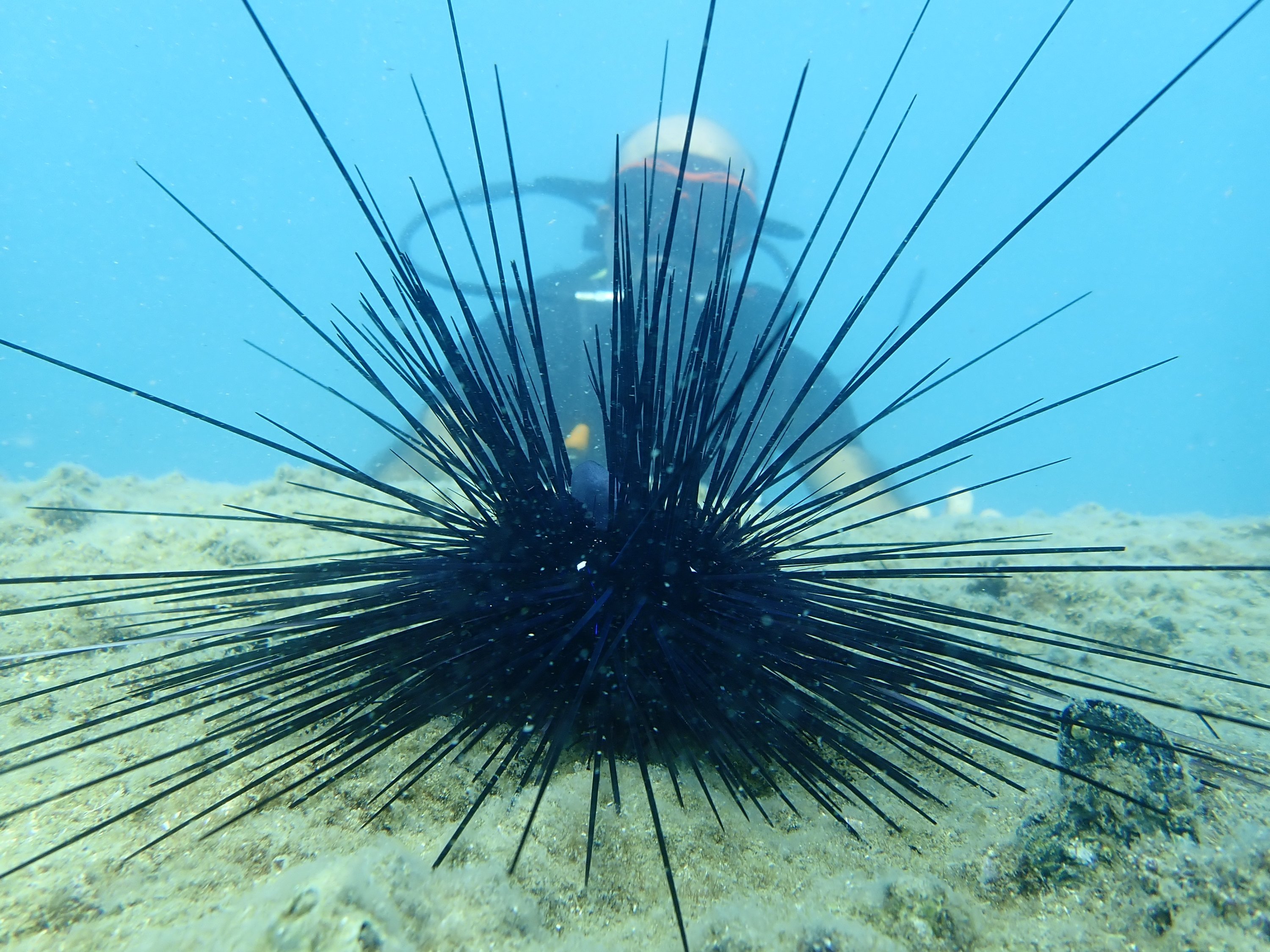
- Location: Found in shallow coastal waters, particularly in coral reefs and rocky areas.
- Injury Mechanism: Sharp spines or venomous appendages can cause puncture wounds or envenomation.
- Clinical Presentation: Pain, swelling, and potential for embedded spines; severe cases may lead to systemic symptoms, including paralysis from certain tropical species.
- Treatment:
- Hot Water Immersion: Relieves pain and inactivates venom.
- Spine Removal: Manually extract superficial spines; deeper or joint-embedded spines may require surgical intervention.
- Tetanus Prophylaxis and Antibiotics: administer if needed
Cone Snails
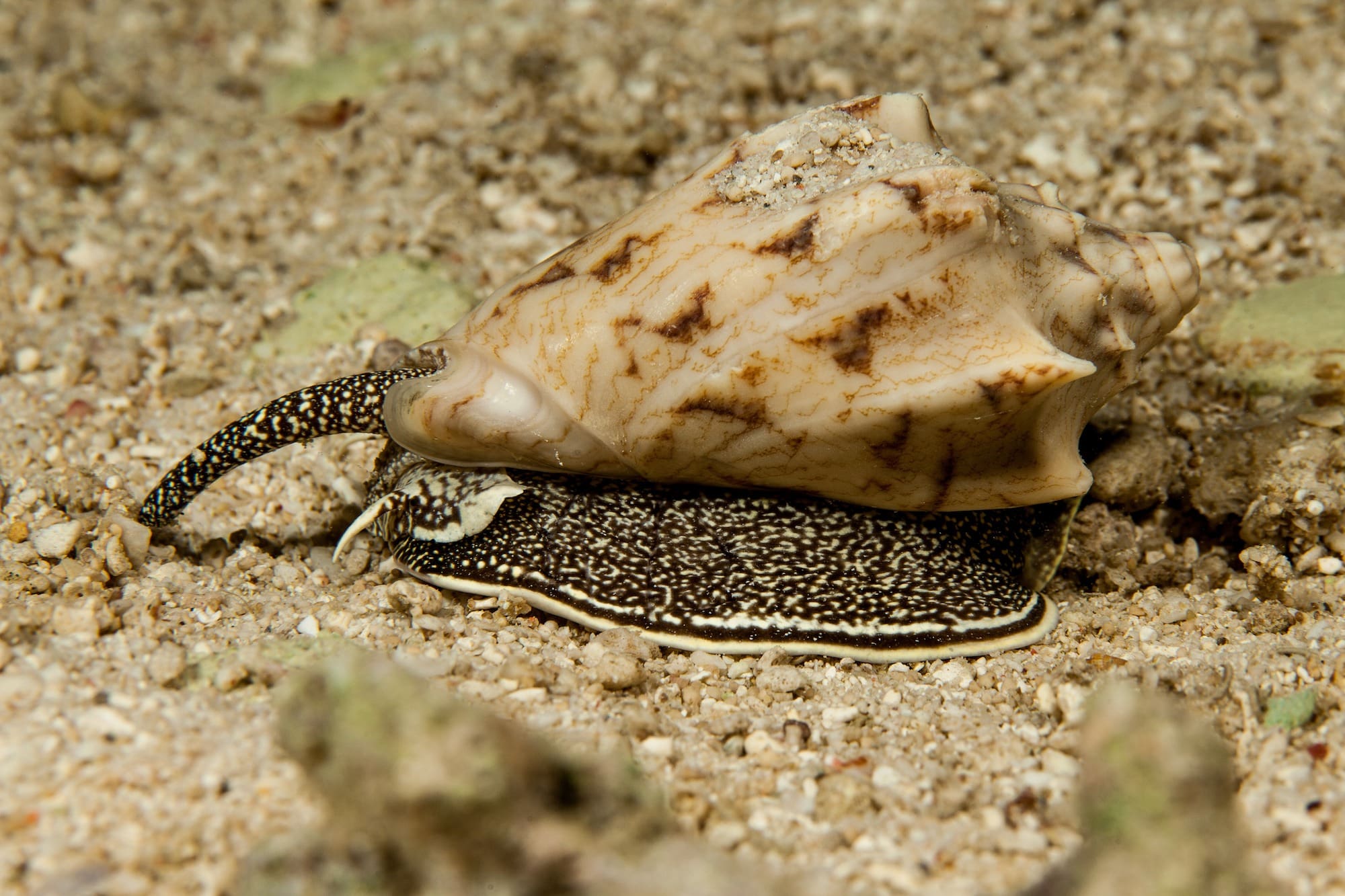
- Location: Found in warm, shallow waters in tropical and subtropical regions, often on sandy bottoms or among coral reefs.
- Injury Mechanism: The cone snail’s venomous harpoon delivers neurotoxic venom.
- Clinical Presentation: Intense pain, swelling, paralysis, and in severe cases, respiratory failure.
- Treatment:
- Wound Care: Clean and manage the puncture wound.
- Neuromuscular Support: Monitor for paralysis and provide respiratory support if necessary.
- No Specific Antivenom: Treatment is primarily supportive.
Jellyfish (including Portuguese Man O’War)
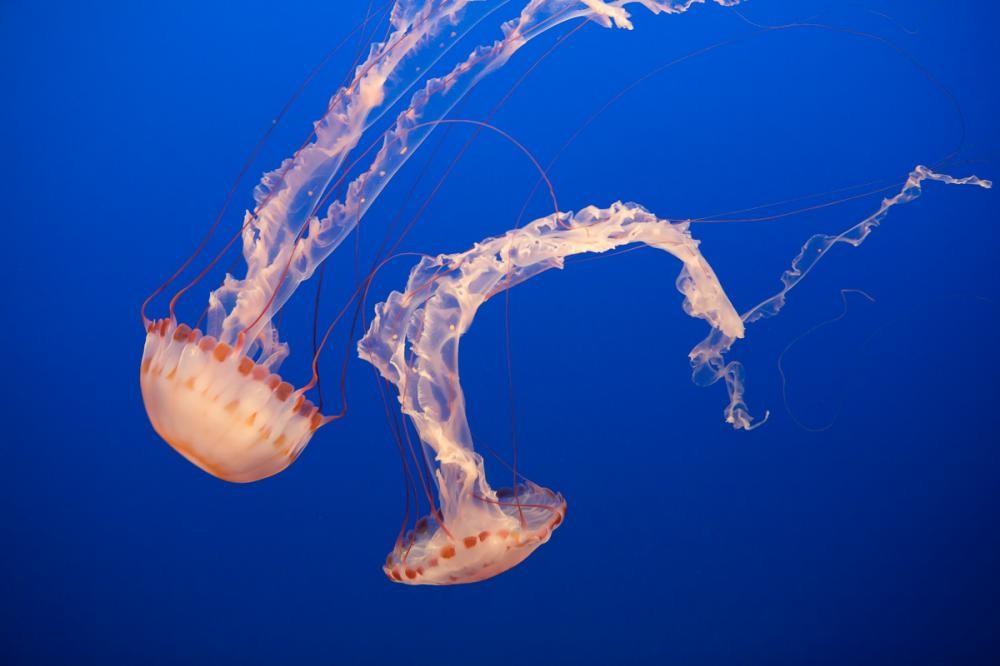
- Location: Found in both warm and temperate waters; often near beaches and in open ocean.
- Injury Mechanism: Nematocysts (stinging cells) release venom on contact.
- Clinical Presentation: Local pain, erythema, and urticaria; severe cases may result in respiratory distress or cardiovascular collapse.
- Treatment:
- Hot or Sea Water Immersion: Provides pain relief and deactivates venom for many species. Do not use freshwater as it may activate undischarged nematocysts
- Vinegar Rinse: Neutralizes venom in tropical species and box jellyfish stings. NOT FOR PORTUGUESE MAN O’WAR
- The Portuguese Man O’War (pictured below)
- Tentacle Removal: Use double gloved hands or forceps; avoid rubbing the area.
- Antihistamines and NSAIDs: For pain and allergic reactions.
- Systemic Treatment: Monitor for anaphylaxis or cardiovascular collapse in severe cases.
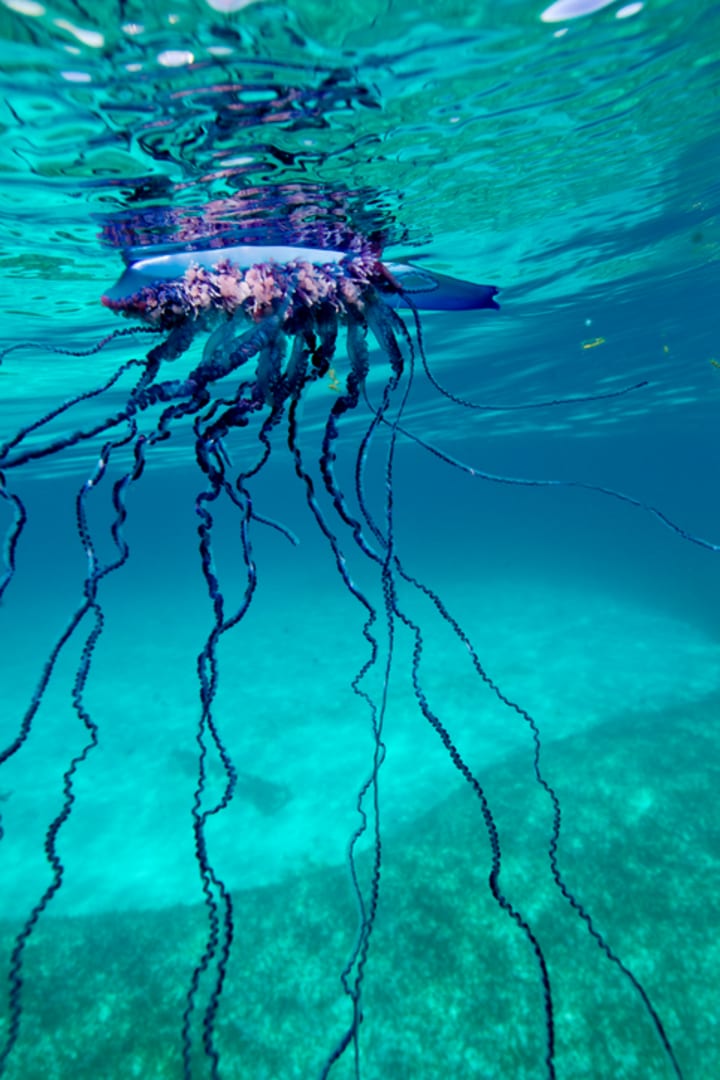
Coral
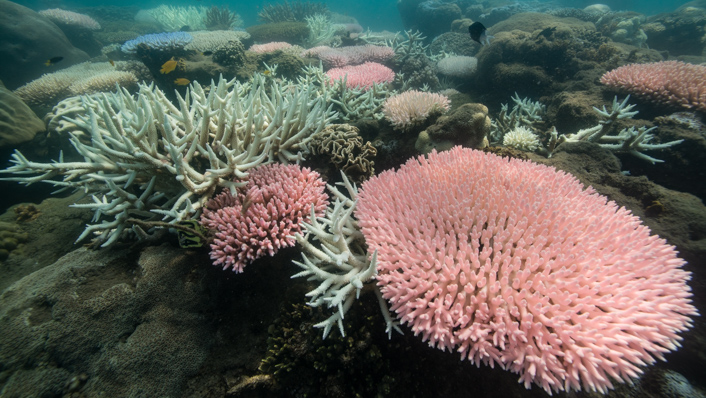
- Location: Found in tropical and subtropical oceans, often forming reefs in shallow waters.
- Injury Mechanism: Abrasions introducing toxins and causing infection.
- Clinical Presentation: Pain, swelling, and redness; risk of infection.
- Treatment:
- Wound Irrigation and Debridement: Prevent infection from marine bacteria.
- Tetanus Prophylaxis and Antibiotics: administer if needed, but especially for Vibrio coverage
Octopuses? Octopi? Octopodes?
eg Blue-Ringed Octopus
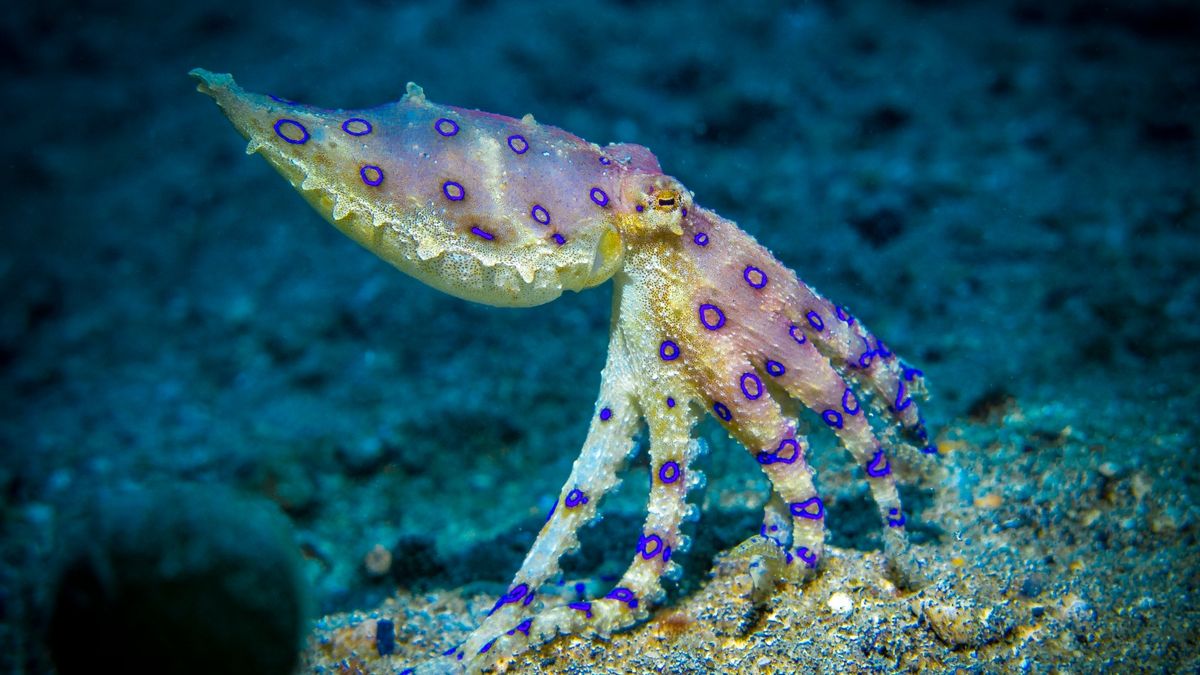
- Location: Found in tide pools and coral reefs in the Indo-Pacific region, particularly in shallow waters.
- Injury Mechanism: Neurotoxic venom, tetrodotoxin, is delivered via a bite.
- Clinical Presentation: Painless bite followed by paralysis, respiratory distress, and possible death.
- Treatment:
- Supportive Care: No antivenom; focus on respiratory support (intubation if needed) and monitoring.
- Wound Care: Clean and manage the bite site.
Summary
Most of these marine animal injuries are treated with supportive care, local wound care, and a tetanus vaccine as needed. Hot water immersion is the answer on boards with the exception of cone snails/octopi (neuromuscular support given the neurotoxin) and jellyfish (acetic acid/vinegar EXCEPT the Portuguese Man O’War which is tentacle removal and antihistamines).
| Marine Animal | Location | Injury Mechanism | Clinical Presentation | Treatment |
| All | Ocean/Warm Coastal Areas | Venomous pokey bits | Severe pain, lacerations, punctures | Hot water immersion, remove foreign bodies, Tdap, Abx for open wounds |
Stingray | Shallow coastal waters in tropical regions | Venomous tail barbs causing lacerations | Severe pain, bleeding, syncope, nausea | Hot water immersion, wound care, Tdap, Abx, radiographs |
Bony Fish | Warm coastal waters and coral reefs | Venomous spines or puncture wounds | Local pain, redness, edema | Hot water immersion, wound care, Tdap, Abx |
Sea Urchin | Shallow coastal waters, coral reefs | Sharp spines causing puncture wounds | Pain, swelling, possible paralysis | Hot water immersion, spine removal, Tdap, Abx |
Cone Snail | Warm, shallow tropical waters | Venomous harpoon delivering neurotoxic venom | Intense pain, paralysis, respiratory failure | Wound care, neuromuscular support |
Jellyfish | Warm and temperate waters, near beaches | Nematocysts releasing venom | Local pain, erythema, possible respiratory distress | Hot water immersion, vinegar (not for Portuguese Man O’ War), tentacle removal, antihistamines |
Coral | Tropical and subtropical oceans | Abrasions introducing toxins | Pain, swelling, risk of infection | Wound irrigation, Tdap, Abx |
Octopus (Blue-Ringed) | Tide pools and coral reefs in Indo-Pacific | Neurotoxic venom via bite | Painless bite, paralysis, respiratory distress | Supportive care, wound care |
Cite this post: Jennifer Luk, MD. “Something in the Water…: Board Review for Marine Animal Poisoning”. GW EM Blog. 1/29/2025. Available at: https://gwemblog.com/marine-tox-review/
Related Posts:
rMETRIQ Score: Not yet rated/21
References
- Stingray Stings – Injuries; Poisoning. MSD Manual Professional Edition. https://www.msdmanuals.com/professional/injuries-poisoning/bites-and-stings/stingray-stings ↩︎
